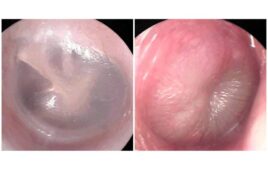Quality of care varied among commercial virtual visit companies where patients used websites to request consultations with physicians they have never met via videoconference, telephone or web chat, according to a new study published online by JAMA Internal Medicine.
Commercial virtual visit companies have grown rapidly and their acceptance by payers also is on the rise. The urgency of the need to develop a regulatory framework or industry-promulgated standards will partly depend on the level of variation in the quality of care among virtual visit companies.
Adam J. Schoenfeld, M.D., of the University of California, San Francisco, and coauthors examined variation in the quality of urgent healthcare among eight virtual visit companies. The authors’ audit study used 67 trained standardized patients who presented to the virtual visit companies with six common acute conditions: ankle pain, streptococcal pharyngitis (strep throat), viral pharyngitis (sore throat), acute rhinosinusitis (sinus infection), low back pain and recurrent female urinary tract infection.
The 67 patients completed 599 commercial virtual visits with 157 internal medicine, emergency medicine or family practice physicians from May 2013 through July 2014. The visits included 372 video conference, 170 telephone and 57 web chat encounters. The authors measured the completeness of histories and physical examinations, correct diagnosis and adherence to relevant guidelines in management decisions.
The authors report virtual visit physicians:
- Asked all the recommended history questions and performed all the recommended physical examination maneuvers in 417 visits (69.6 percent)
- Named the correct diagnosis in 458 visits (76.5 percent); named the wrong diagnosis in 89 visits (14.8 percent); or provided no diagnosis in 52 visits (8.7 percent)
- Adhered to guidelines for key management decisions in 325 visits (54.3 percent)
- Referred patients to local brick-and-mortar healthcare providers in 83 patients encounters (13.9 percent)
Results of the study suggest that the completeness of histories and physical examinations, and the correct diagnosis varied by condition and virtual visit company. Also, variation across virtual visit websites was greater for viral pharyngitis and acute rhinosinusitis than for streptococcal pharyngitis and low back pain or ankle pain and recurrent urinary tract infection. There was no variation in adherence to guidelines by mode of communication, according to the study.
Study limitations include not knowing whether virtual visits are superior to or inferior to in-person visits, the exclusion of some virtual visit companies and the study’s sample size.
“We found a significant variation cross companies and by condition. The patterns of variation we observed imply an opportunity to improve and point toward approaches to determine how to make these improvements,” the authors conclude.
(JAMA Intern Med. Published online April 4, 2016. doi:10.1001/jamainternmed.2015.8248. Available pre-embargo to the media at http://media.jamanetwork.com.)
Editor’s Note: The article includes funding/support disclosures. Please see the article for additional information, including other authors, author contributions and affiliations, financial disclosures, funding and support, etc.
Commentary: Healthcare Communication Technology
“Healthcare has had rapid changes in financing and shifts in the organization of care and continues to suffer the growing pains of building a modern information technology infrastructure. The high variability and uncoordinated care described by Schoenfeld and colleagues is low-value care. Mature healthcare communication technology should deliver high-value care that is flexible (online, telephone, in-person and emergent), coordinated, longitudinal and proactive based on strong relationships with a primary care team,” writes Jeffrey A. Linder, M.D., M.P.H., and David M. Levine, M.D., M.A., of Brigham and Women’s Hospital, Boston, write in a related commentary.
(JAMA Intern Med. Published online April 4, 2016. doi:10.1001/jamainternmed.2016.0692. Available pre-embargo to the media at http://media.jamanetwork.com.)




